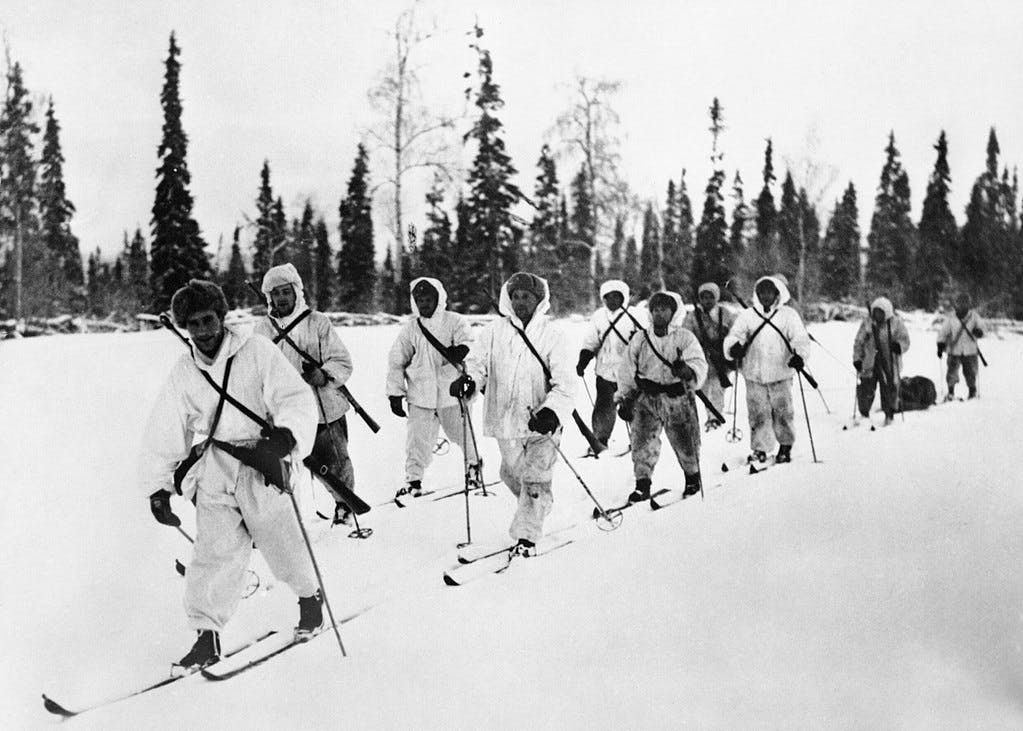For Ukraine: A New Form of Finlandization
And it could see American boots on the ground in eastern Ukraine.

Before Russia’s full-bore invasion of Ukraine 14 months ago, the East Coast realpolitik smart set often suggested that Ukraine follow the path of “Finlandization.” That was a reference to the fate of the Finns in the 20th century.
In 1917, Finland, then a grand duchy of the Russian empire, broke free during the chaos of the Bolshevik revolution. Yet the Soviet leader, Joseph Stalin, quickly acquired the imperialist views of the tsars.
So Stalin sought to create a Finnish Soviet socialist republic. But, though the USSR had a population 50 times larger than Finland’s, the Soviets lost the first war, in 1940. Then in 1944, the Soviets won a rematch — and grabbed 11 percent of Finland’s territory.
To survive as an independent nation, the Finns embarked on eight decades of studied neutrality. This involved Finnish political leaders patiently enduring endless vodka drinking bouts and naked steam sauna sessions with Soviet leaders.
Finns saw this as a small price to pay for three generations of peace and prosperity. As recently as January 2022, Finnish public support for joining NATO languished at 30 percent. Then Russia launched its blitzkrieg on Ukraine, the Black Sea counterpart of Finland on the Baltic.
Finnish popular support for acceding to the North Atlantic Treaty skyrocketed, hitting 85 percent last fall. Two weeks ago, Finland was admitted to the North Atlantic Treaty Organization. Of the 31 member countries, Finland went through the fastest accession process in the treaty’s 74-year history.
Suddenly, advocates of appeasement to Moscow stopped preaching “Finlandization” to Ukrainians.
With President Putin’s Moscow showing unremitting hostility to the West, there is an enduring attraction to NATO’s Article Five self-defense clause, the “one for all — all for one” policy. The three Baltic nations know that in the first few days of the 2022 invasion, Russia gobbled up an area of Ukraine larger than Estonia and Latvia combined. The three Baltics have been safely inside NATO since 2004.
Kremlin propagandists not only threaten the Baltics, but also Poland. Harking back to the tsarist empire, they say Russia’s western border should be with Poland. A NATO member since 1999, Poland is a big military backer of Ukraine. The thinking in Warsaw is: Better to stop the Russians in eastern Ukraine than in eastern Poland.
Cognizant of this threat, NATO is in the process of expanding eight battalions into brigades on NATO’s eastern border. This could expand NATO troops in Eastern Europe five-fold, to 50,000 soldiers.
Now all eyes are on the upcoming NATO summit at Vilnius, Lithuania, in July. “In Vilnius NATO leaders should assert clearly that, as former US Secretary of State Henry Kissinger has stated, Moscow’s aggression means that European security requires a Ukraine anchored to NATO,” two American veterans of NATO policymaking, Ian Brzezinski and Alexander Vershbow, write in an Atlantic Council essay posted yesterday. “This means membership and interim steps toward that goal.”
Joining NATO would be tricky for Ukraine. Unanimous approval by the member states is not guaranteed. A key requirement is that a candidate member not have border disputes with a neighbor. Knowing this, Moscow subsidizes and protects secessionist regions in Georgia, Moldova, and Ukraine.
Depending on the outcome of Ukraine’s expected summer offensive, the solution may be the kind of armistice that has kept the peace on the Korean peninsula for 70 years, since July 27, 1953. This armistice holds thanks to two mechanisms little known to the American public.
For one, America and South Korea have a mutual self-defense pact. Equally important, 23,500 American troops are stationed in South Korea. More than a guarantee of a rapid response, the Yanks serve as a human tripwire.
Were North Korea to follow through on its frequent threats to turn Seoul into “a sea of fire,” American soldiers would die. This would enrage American opinion, prompting Washington to come down like a ton of bricks on Pyongyang. Aware of this calculus, three generations of North Korea’s ruling Kim dynasty have refrained from putting the armistice to the test.
Ukrainians are wary of paper promises of security. In 1994, Ukraine’s borders were guaranteed by the Budapest Memorandum, an agreement signed by the leaders of Russia, Ukraine, Britain, and America.
This proved to be as useless as the “Non-Aggression Pact” signed by the Soviet Union and Finland in 1934. More recently, Mr. Putin told military historians that Stalin launched the Winter War of 1940 to “correct mistakes” made in drawing Finland’s border in 1917.
Ukraine’s counter-offensive against Russia this summer could deal a knockout blow to the Russian army and knock Mr. Putin off the throne. More likely is that the American public may face the prospect of peace in Ukraine through a Korean-style armistice, enforced by NATO and by American boots on the ground in eastern Ukraine.

